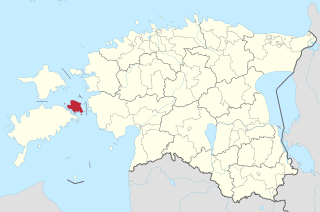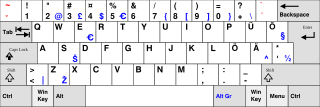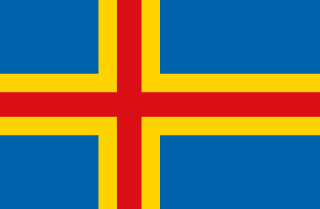
Hiiumaa is the second largest island in Estonia and is part of the West Estonian archipelago, in the Baltic Sea. It has an area of 989 km2 and is 22 km from the Estonian mainland. Its largest town is Kärdla. It is located within Hiiu County.

Harju County, is one of the fifteen counties of Estonia. It is situated in northern Estonia, on the southern coast of the Gulf of Finland, and borders Lääne-Viru County to the east, Järva County to the southeast, Rapla County to the south, and Lääne County to the southwest. The capital and largest city of Estonia, Tallinn, is situated in Harju County. Harju is the largest county in Estonia in terms of population, as almost half (45%) of Estonia's population lives in Harju County.

Lääne County is one of the 15 counties of Estonia. It is located in western Estonia and borders the Baltic Sea to the north, Harju County to the north-east, Rapla County to the east, Pärnu County to the south, and the island counties of Saare and Hiiu to the west. In January 2009 Lääne County had a population of 23,810 – constituting 2.0% of the total population in Estonia.

Ruhnu is an Estonian island in the Gulf of Riga in the Baltic Sea. Its territory of 11.9 square kilometres (4.6 sq mi) is administratively part of Saare maakond (county). Ruhnu lies geographically closer to the coast of Courland on the mainland of Latvia than it is to any point in the rest of Estonia. With less than 150 official residents, the Ruhnu vald (parish) has the smallest population of Estonia's 79 municipalities. Before 1944, it was for centuries populated by ethnic Swedes and traditional Swedish law was used.

Muhu is an island in the West Estonian archipelago of the Baltic Sea. With an area of 198 km2 (76 sq mi), it is the third largest island belonging to Estonia, after Saaremaa and Hiiumaa.

Noarootsi Parish was a rural municipality in Lääne County, western Estonia between 1991 and 2017. It covered an area of 296 km2 (114 sq mi) and had a population of 910.

Vormsi Parish is a rural municipality of Estonia, in Lääne County. It covers the area of Vormsi island. The population of Vormsi is 231 and has an area of 92.93 km2.

Naissaar is an island in Estonia. It is located in the Gulf of Finland, northwest of the capital city Tallinn, and is administratively part of Viimsi Parish. The island has an area of 18.6 square kilometres. It is 8 kilometres long and 3.5 kilometres wide, and lies about 8.5 kilometres from the mainland. The highest point on the island is Kunilamägi, which is 27 metres above sea level. The island consists predominantly of coniferous forest and piles of stones and boulders. In 2020, the island had a population of 17; in 2011 the island had about 35 permanent residents and some summer residents.

Osmussaar is an Estonian island situated in the mouth of the Gulf of Finland in the Baltic Sea, 7.5 km off the Estonian mainland. Administratively the island is part of Lääne-Nigula Parish in Lääne County. Its area is 4.8 km2.

West Estonian archipelago is a group of Estonian islands located in the Baltic Sea around Väinameri. The total area is about 4,000 km2 (1,500 sq mi). The archipelago is composed of the islands Saaremaa, Hiiumaa, Muhu, Vormsi and about 900 other smaller islands. The archipelago is separated from the Estonian mainland by the Väinameri Sea.

The Estonian Swedes, or Estonia-Swedes, or "Coastal Swedes" are a Swedish-speaking minority traditionally residing in the coastal areas and islands of what is now western and northern Estonia. During World War II, almost all of the remaining Swedish-speaking minority escaped from the Soviet invasion of Estonia and fled to Sweden in 1944. Only the descendants of a few individuals who stayed behind are permanent residents in Estonia today.

The official language of Estonia is Estonian, a Uralic language of the Finnic branch, which is related to Finnish. It is unrelated to the bordering Russian and Latvian languages, both of which are Indo-European.

Hullo is a village on the fourth largest island of Estonia, Vormsi, in Lääne County, Estonia. It is the administrative centre of Vormsi Parish. The population of Hullo was estimated to be 245 as of January 1, 2010.

The Swedish diaspora consists of emigrants and their descendants, especially those that maintain some of the customs of their Swedish culture. Notable Swedish communities exist in the United States, Argentina, Australia, Canada, New Zealand, Brazil, and the United Kingdom as well as others.

Pakri Islands are two Estonian islands in the Finnish Gulf: Suur-Pakri and Väike-Pakri. Administratively they belong to the town of Paldiski. For centuries the islands had been inhabited by Estonian Swedes, until during the Second World War the entire population was forced to leave.

Åland is an autonomous and demilitarised region of Finland. Receiving its autonomy by a 1920 decision of the League of Nations, it is the smallest region of Finland by both area (1,580 km2) and population (30,129), constituting 0.51% of Finland's land area and 0.54% of its population. Its only official language is Swedish and the capital city is Mariehamn.
Juminda is a village in Kuusalu Parish, Harju County in northern Estonia. It is located on the coast of the Gulf of Finland, on top of the Juminda Peninsula, on the territory of Lahemaa National Park. Juminda has a population of 35.
Einbi is a village in Lääne-Nigula Parish, Lääne County. It is the westernmost settlement in mainland Estonia.

Estonian Swedish are the eastern varieties of the Swedish language that were spoken in the formerly Swedish-populated areas of Estonia on the islands of Ormsö (Vormsi), Ösel (Saaremaa), Dagö (Hiiumaa) and Runö (Ruhnu), and the peninsula of Nuckö (Noarootsi), by the local Estonian Swedes.

Aiboland is the Estonian Swedish name for the historically Swedish-speaking areas and towns of northern and western Estonia.






































